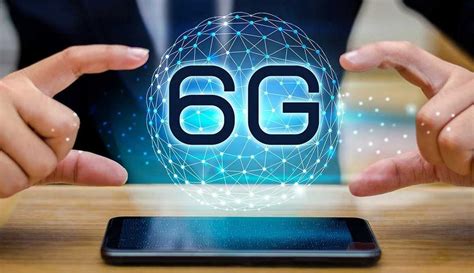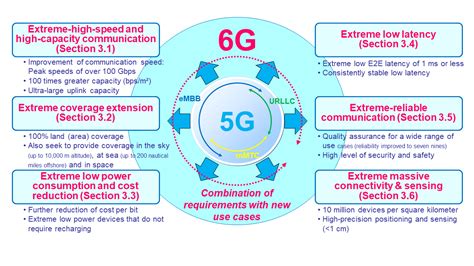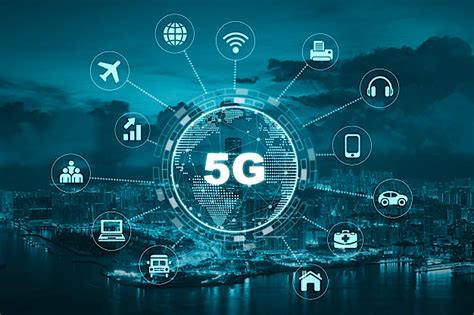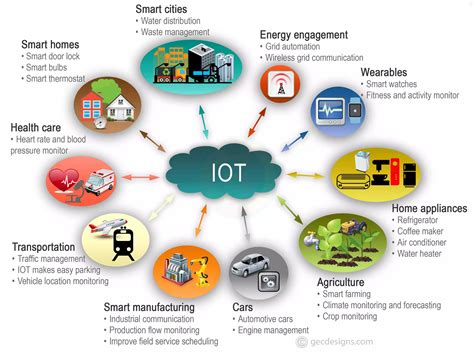Breaking News


Popular News


Explore the definition, technological advancements, potential impact, and challenges of 6G mobile communication and its integration with the Internet of Things. Learn about future development.The world of mobile communication is rapidly evolving, and the next big leap is on the horizon with the development of 6G technology. In this blog post, we will explore the revolutionary new era of connectivity that 6G mobile communication is set to bring. From defining what exactly 6G mobile communication is to examining the technological advancements it brings, we will delve into the potential impact it could have on connectivity and its integration with the Internet of Things. Additionally, we will discuss the challenges that come with this new technology and the future developments that could be expected. With 6G on the horizon, the possibilities for faster, more reliable, and more versatile communication are endless, and it’s important to understand the potential implications and benefits it could bring. Join us as we unpack the world of 6G mobile communication and how it is set to revolutionize connectivity as we know it.
Contents

6G mobile communication refers to the sixth generation of wireless technology, succeeding the current 5G network. It represents the next phase of mobile communication, offering advanced features and capabilities that are set to revolutionize connectivity. 6G is expected to be significantly faster than its predecessors, with the potential to deliver data speeds of up to 1 terabyte per second. This will enable seamless and ultra-high definition video streaming, immersive virtual reality experiences, and real-time communication across various devices.
Furthermore, 6G is envisioned to provide vastly improved network reliability, ultra-low latency, and increased energy efficiency. These advancements will not only enhance the user experience but also open up new possibilities for connectivity in sectors such as healthcare, transportation, and entertainment.
In addition, 6G is expected to incorporate cutting-edge technologies such as holographic communication, advanced artificial intelligence, and quantum computing. This convergence of technologies will pave the way for unprecedented levels of connectivity, enabling the seamless integration of digital and physical environments.

As 5G technology continues to roll out across the world, researchers and industry leaders are already hard at work developing the next generation of mobile communication: 6G. With the potential to revolutionize connectivity, 6G is expected to bring about significant technological advancements that will shape the future of wireless communication.
One of the key technological advancements in 6G is the use of terahertz frequency bands, which offer much higher data transfer rates compared to the millimeter-wave frequencies used in 5G. This will enable faster and more reliable connectivity, making it possible to support a multitude of new applications and services.
Another area of advancement in 6G is the integration of artificial intelligence and machine learning techniques to optimize network management and resource allocation. This will allow for more efficient use of network resources and improved quality of service for users, paving the way for a more intelligent and responsive wireless network.
| Key Technological Advancements in 6G |
|---|
| Terahertz frequency bands for higher data transfer rates |
| Integration of AI and machine learning for network optimization |

6G mobile communication technology is expected to have a significant impact on connectivity across the globe. With faster data transfer speeds and lower latency, 6G has the potential to revolutionize the way we connect with the world around us. The seamless integration of 6G with various devices and applications will enable enhanced connectivity and communication for individuals and businesses.
Furthermore, the advancements in 6G technology are likely to bring about major improvements in areas such as telemedicine, autonomous vehicles, and smart cities. The high-speed, low-latency connectivity offered by 6G will facilitate real-time data transmission and communication, laying the foundation for the development of innovative solutions in various sectors.
In addition, 6G’s potential impact on connectivity extends beyond traditional communication channels. It is expected to play a crucial role in bridging the digital divide, providing reliable connectivity to underserved and remote areas. This could lead to greater accessibility to information, education, and economic opportunities for communities worldwide.

As we move into the future of connectivity with the anticipated arrival of 6G mobile communication, one of the most promising aspects is its integration with Internet of Things (IoT). With the growing number of interconnected devices and sensors, 6G is set to revolutionize the way these devices communicate and interact with each other.
Imagine a world where every aspect of our lives, from smart homes to autonomous vehicles, is seamlessly connected and controlled through the power of 6G technology. The integration of 6G with IoT will not only enhance the efficiency and speed of data transfer but also enable real-time decision-making and automation on a scale never seen before.
Furthermore, the potential for 6G to support a massive number of IoT devices simultaneously opens up new possibilities for industries such as healthcare, logistics, and agriculture, where reliable and low-latency connectivity is critical for the success of IoT applications.

As we look forward to the development of 6G mobile communication, it is important to consider the potential challenges that may arise. One of the key challenges that researchers and engineers are likely to face is the ability to develop technologies that can support the high-frequency bands that will be used for 6G networks. These higher frequencies have the potential to offer faster data speeds and lower latency, but they also present significant technical challenges in terms of signal propagation and interference. Overcoming these challenges will require innovative and advanced signal processing techniques, as well as new infrastructure and hardware developments.
Another important aspect to consider is the potential impact of 6G networks on the environment. As the demand for connectivity continues to grow, so does the energy consumption of mobile communication networks. It will be crucial for the industry to develop sustainable and energy-efficient solutions to power the future 6G networks. This may involve the use of renewable energy sources, as well as the development of more energy-efficient hardware and network architectures.
Looking towards the future development of 6G, it will be essential for industry leaders, policymakers, and researchers to work together to address these challenges and ensure the successful deployment of 6G networks. Collaboration and investment in research and development will be crucial in overcoming these challenges and shaping the future of mobile communication. By prioritizing sustainability, innovation, and collaboration, the industry can work towards the development of 6G networks that offer high-speed connectivity, low latency, and seamless integration with emerging technologies such as the Internet of Things.

What is 6G mobile communication?
6G mobile communication refers to the next generation of wireless technology that will succeed 5G. It aims to provide even faster internet speeds, lower latency, and more reliable connectivity.
What are the key features of 6G?
Some of the key features of 6G include terahertz frequencies, AI-integration, holographic communications, and ubiquitous connectivity. These features will enable advanced applications such as virtual reality, telemedicine, and autonomous vehicles.
How will 6G revolutionize connectivity?
6G is expected to revolutionize connectivity by enabling extremely high data rates, ultra-low latency, and reliable connections in even the most challenging environments. This will open up new possibilities for communication and innovation across various industries.
When can we expect the deployment of 6G technology?
While it’s still in the early stages of research and development, some experts predict that 6G could start to become commercially available by the end of the decade, with widespread adoption taking place in the 2030s.
What are the potential challenges of implementing 6G?
Some potential challenges of implementing 6G include regulatory hurdles, infrastructure requirements, security considerations, and the need for global standardization. Addressing these challenges will be crucial for the successful rollout of 6G technology.
How will 6G impact the current mobile communication landscape?
6G is expected to significantly impact the current mobile communication landscape by enabling transformative new applications and services, as well as driving innovation in areas such as IoT, artificial intelligence, and edge computing.
What are some potential applications of 6G?
Some potential applications of 6G include real-time holographic communication, advanced telemedicine and remote surgery, immersive virtual reality experiences, smart infrastructure, and seamless connectivity for autonomous vehicles and drones.